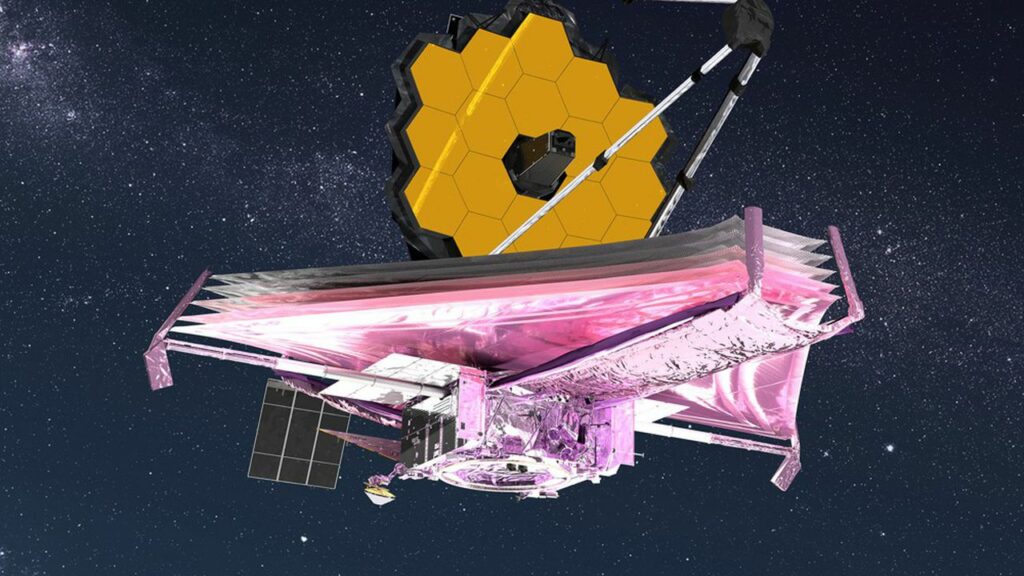A multitude of shining points, behind which it becomes difficult to see the absolute blackness of the Universe. A series of images heralding a promising future. Last Thursday, NASA released the first images captured by the instruments of the James Webb Telescope (JWST), which orbits some 1.5 million kilometers from Earth.
Leaving on December 25 aboard an Ariane 5 rocket, the space observatory has since experienced no hitch in the program which should lead it to carry out its first scientific observations this summer. After completing its deployment and reaching its final destination in January, it successfully aligned all 18 segments of its primary mirror in March, delivering its first-ever, razor-sharp image of the star 2MASS J17554042+6551277, located 2,000 light years from our planet.

The star 2MASS J17554042 + 6551277, first image captured by the JWST.NASA/STScI
All that remained was to calibrate its four instruments, all operating in the infrared. This meant giving them time to reach their operating temperature – which for one of them, the MIRIM imager, is around -266°C. A course crossed on April 21, according to NASA, allowing the engineers and scientists of the mission to direct the JWST on the Large Magellanic Cloud, a dwarf galaxy satellite of our Milky Way.
« Science will take a giant step forward »
This is how the instruments were able to capture and restore the series of images unveiled last week by the American space agency, showing hundreds of thousands of stars. « After a comprehensive review, it was confirmed that the telescope was able to capture sharp and well-focused images, » she wrote in a statement, adding that the « optical performance » of the telescope « exceeds expectations. » more optimistic engineers.

The Large Magellanic Cloud, captured by JWST instruments.NASA/STScI
“This first image moved me. […] It was immediately magnificent and we could see the image quality that we were looking for, « testified on Twitter Pierre-Olivier Lagage, astrophysicist within the Commissariat for Atomic Energy (CEA), who worked to the development of the MIRIM imager. « I’m sure now that we’re going to see things never seen before, extraordinary, » he continued. Science will take a giant leap forward. »
“These remarkable images demonstrate what can be accomplished when there is a bold scientific vision for exploring the Universe,” said Lee Feinberg, head of optical elements of the James Webb, quoted in NASA statement.
Two more months of patience
There is one very last step before the JWST truly enters active service. During this, the engineers will test all the observation modes allowed by the instruments to measure their performance and correct calibration.
They will also carry out thermal stability tests, which consist of measuring the variation in the optical quality and pointing of the infrared systems according to the position of the telescope and the angle at which solar radiation strikes its thermal shield. This phase “will take about two months, before the start of operations during the summer”, specifies NASA.
The “10 billion dollar telescope” will therefore be able to attempt to fulfill the mission for which it was designed: to capture the light signals emitted by the very first galaxies formed after the Big Bang, 13.5 billion years ago. years, and perhaps give us answers on the birth of the Universe.

